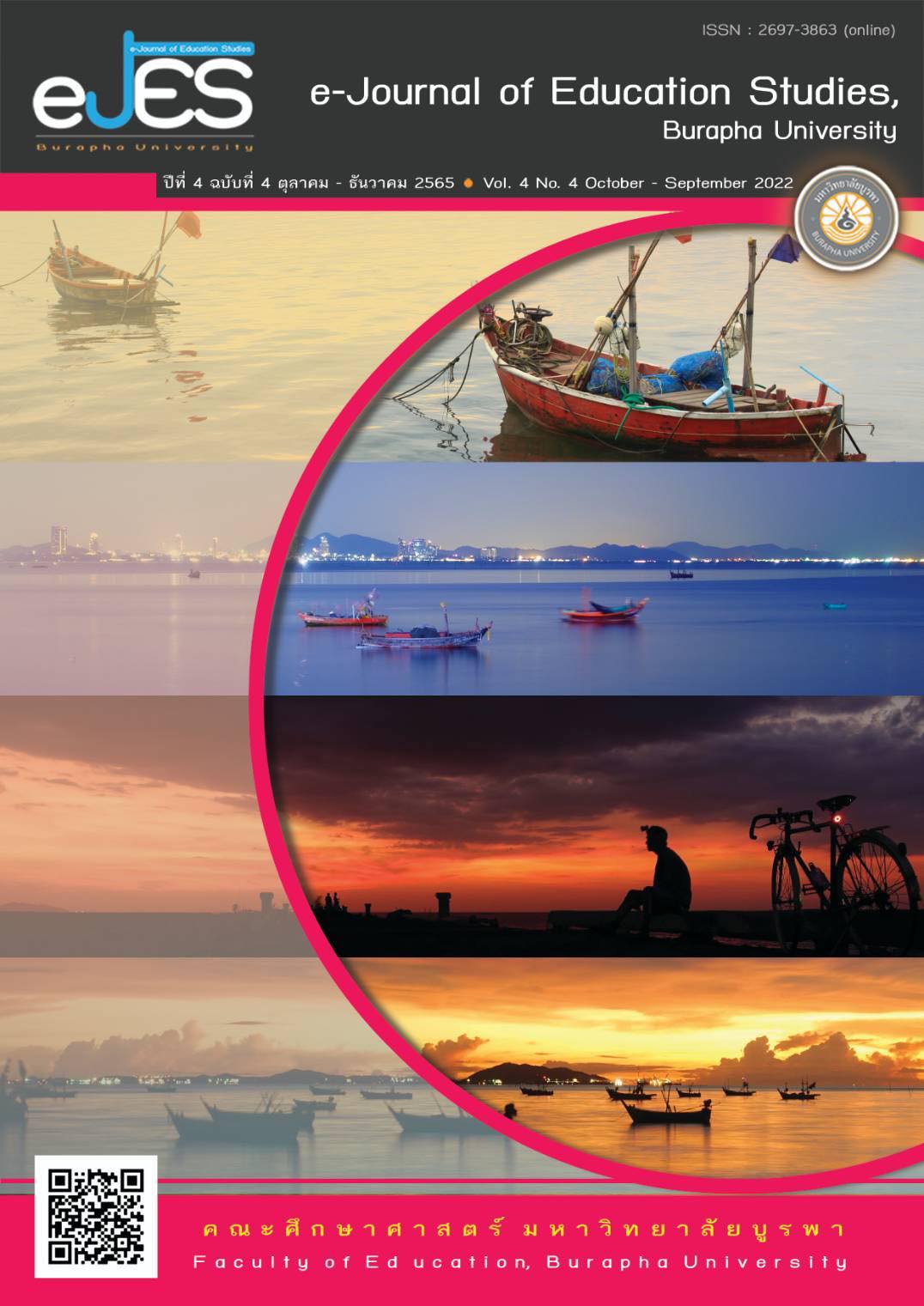Attitudes Towards English ENL1007 Online Learning of First Year English Major Students at Suan Sunandha Rajabhat University
Main Article Content
บทคัดย่อ
This study aimed at investigating attitudes towards online English learning of first-year English majors of Suan Sunandha Rajabhat University (SSRU). The sample, drawn using purposive sampling, consisted of 90 enrollees in the English ENL1007 course. The research instrument in the study was a questionnaire divided into 3 parts, including demographic questions, Likert scale questions, and open-ended questions. The data gained were then analyzed quantitatively and qualitatively. The quantitative findings showed that, overall, the 90 SSRU students had positive attitudes towards online English learning, especially in terms of enjoyment. The qualitative findings also revealed that the students were satisfied with online learning, thanks to its 24-hour access, flexibility, and convenience.
Article Details
เอกสารอ้างอิง
Anderson, S.E. & Harris, J. B. (1997) Factors associated with amount of use and benefits obtained by users of a statewide educational telecomputing network. Educational Technology Research and Development, 45(1), 19-50.
Anderson, T. & Elloumi, F. (2004). Theory and Practice of Online Learning. Canada: Athabasca University.
Annansingh, F. & Bright, A. (2010). Exploring barriers to effective e-Learning: case study of DNPA. Interactive Technology and Smart Education, 7(1), 55-65.
Balci, et al. (2020). Schriften zur Sprache und Literatur IV. London: Ijopec.
Cheng, K. (2006). A research study on students’ level of acceptance in applying e-learning for business course: A case study on a Technical College in Taiwan. Journal of American Academy of Business, 8(2), 265-272.
Congleton, A. R., & Rajaram, S. (2011). The influence of learning methods on collaboration: Prior repeated retrieval enhances retrieval organization, abolishes collaborative inhibition, and promotes post-collaborative memory. Journal of Experimental Psychology: General, 140(4), 535–551.
Davidson, A. L., & Schofield, J. W., (2004). Achieving equality of student internet access within schools. The Social Psychology of Group Identity and Social Conflict: Theory, Application, and Practice, 97-109.
Evans, C. (2003). The relationship between the cognitive style(s) and preferred teacher style(s)of PGCE students (Doctoral dissertation). Durham: University of Durham.
Joshi, R. & Kaur, G. (2011). Role of internet in a language classroom. Journal of Technology for ELT, 1(4), 1-3.
Kandasamy, M., & Shah, P. B. M. (2013). Knowledge, attitude and use of ICT among ESL teachers. Proceedings of the Global Summit on Education, 185-199.
Khassawneh, S. F. (2012). EFL Teachers’ perceptions and perspectives on the use of the internet in the teaching process at Yarmouk University in Jordan. European Scientific Journal, 8(13), 202-244.
Knowles, E. & Kerkman, D. (2007). An investigation of students attitude and motivation toward online learning. Insight: A Collection of Faculty Scholarship, 2(1). 70-80.
Lee, M.H. & Tsai, C.C. (2010). Exploring teachers' perceived self efficacy and technological pedagogical content knowledge with respect to educational use of the World Wide Web. An International Journal of the Learning Sciences, 38(1), 1-21.
Liaw, S. S., & Huang, H. M. (2011). A study of investigating learners attitudes toward e-learning. Proceedings of the 5th International Conference on Distance Learning and Education, 12, 28-32.
Sanders, D. W. & Morrison-Shetlar, A. I. (2001). Student attitudes toward Web-enhanced instruction in an introductory biology course. Journal of Research on Computing in Education, 33(3), 251-62.
Tezci, E. (2009). Teachers’ effect on ICT use in education: the turkey sample. Procedia Social and Behavioral Sciences, 1(1) 1285-1294.
Tongboonyoung, N. (2013). The use of film clips to enhance the English communicative skills of eighth grade Thai students (Master’s thesis). Bangkok: Srinakharinwirot University.
Urdan, T.A. & Weggen, C.C. (2000). Corporate e-learning: exploring a new frontier. WR Hambrecht Co.
Voogt, J. & Pelgrums, H. (2005). ICT and curriculum change. An Interdisciplinary Journal on Humans in ICT Environments, 1(2). 157-175.
Wasrchauer, M. (1996a). Comparing face-to-face and electronic communication in the second language classroom. CAUCO Journal, 13(2), 7-26.
Wiriyachittra, A. (2002). English language teaching and learning in Thailand in this decade. Thai TESOL Focus, 15(1), 4-9.
Zabadi, A. M. & Alawi, A. H. (2016). University students’ attitudes towards e-Learning: University of Business & Technology (UBT)-Saudi Arabia-Jeddah: A case study. International Journal of Business and Management, 11(6). 293.
Zhang, C. (2013). A study of Internet use in EFL teaching and learning in northwest China. Asian Social Science, 9(2), 48-52.
Zhong, Y. (2008). A study of autonomy English learning on the Internet. English Language Teaching, 1(2), 147-150.
Zikmund, W.G. (2003). Business Research Methods Fort Worth. TX: The Dryden Press.



